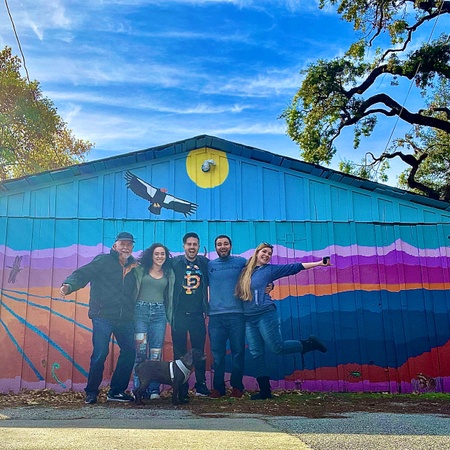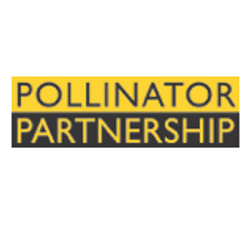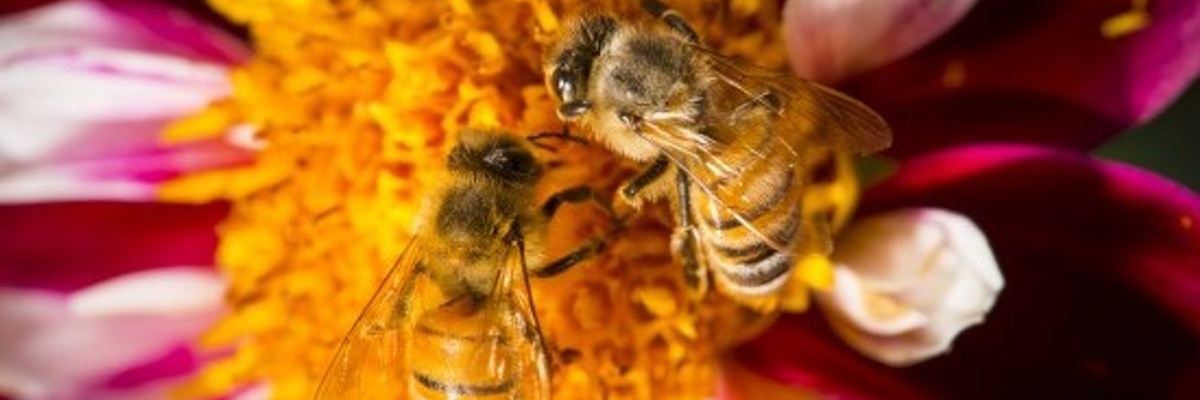

Invite pollinators to your neighborhood by planting a pollinator friendly habitat in your garden, farm, school, park or just about anywhere!
The Idea
Pollinator Partnership helps people protect pollinators to ensure healthy ecosystems and food security. The Pollinator Partnership’s mission is to promote the health of pollinators, critical to food and ecosystems, through conservation, education, and research. Their signature initiatives include the NAPPC (North American Pollinator Protection Campaign), National Pollinator Week, and the Ecoregional Planting Guides, which this page will help you to get started with in your community.
The ecoregional planting guides, Selecting Plants for Pollinators, are tailored to specific areas of the United States and Canada. You can find out which ecoregion you live in simply by entering your zip code / postal code at http://pollinator.org/guides and get your free guide tailored to the pollinators in your region. You can find lists of plant names that will attract pollinators and help you build a beautiful pollinator habitat! Print these lists and bring them to your local native plant, garden center or nursery and then get a group together and get planting!
Invite pollinators to your neighborhood by planting a pollinator friendly habitat in your garden, farm, school, park or just about anywhere!
The Idea
Pollinator Partnership helps people protect pollinators to ensure healthy ecosystems and food security. The Pollinator Partnership’s mission is to promote the health of pollinators, critical to food and ecosystems, through conservation, education, and research. Their signature initiatives include the NAPPC (North American Pollinator Protection Campaign), National Pollinator Week, and the Ecoregional Planting Guides, which this page will help you to get started with in your community.
The ecoregional planting guides, Selecting Plants for Pollinators, are tailored to specific areas of the United States and Canada. You can find out which ecoregion you live in simply by entering your zip code / postal code at http://pollinator.org/guides and get your free guide tailored to the pollinators in your region. You can find lists of plant names that will attract pollinators and help you build a beautiful pollinator habitat! Print these lists and bring them to your local native plant, garden center or nursery and then get a group together and get planting!
This guy was busy working on a cactus flower that is nearing the bloom stage.
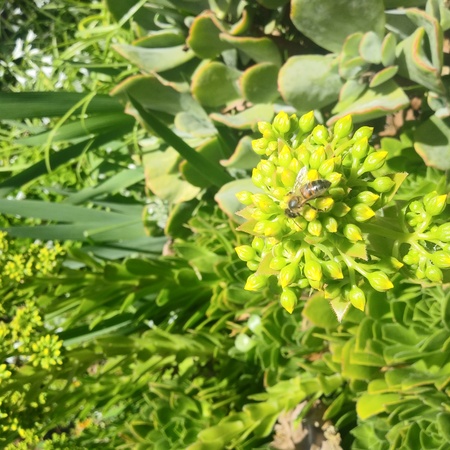
A sample of recent addition's.
I am one that likes to start seed.
I use only heirloom's as they regenerate themselves once established.
Yippee!
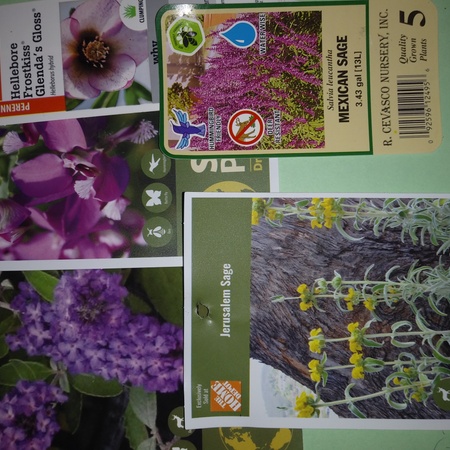
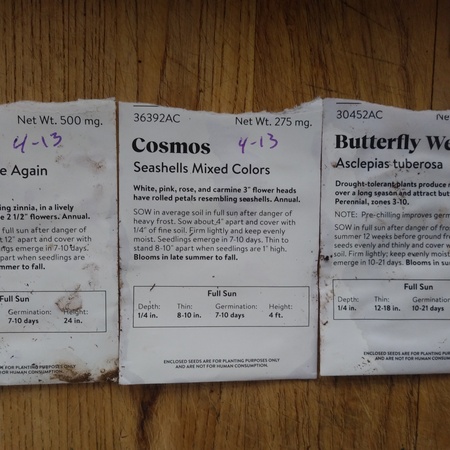
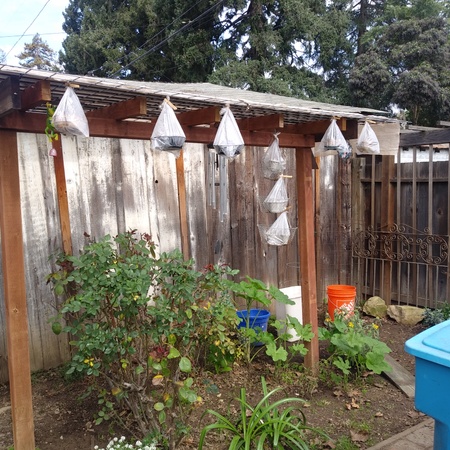
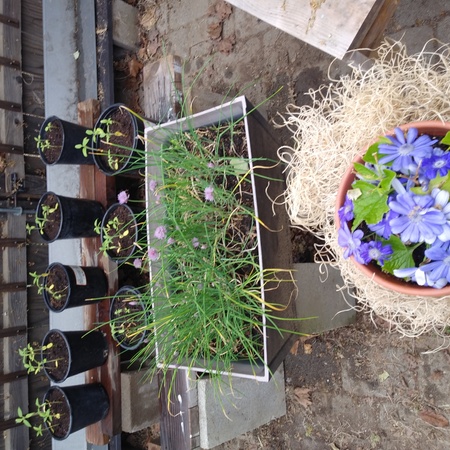
SoSide house view Dec 2023- Apr 2024.
There are many flower's blooming that are unseen with this particular picture.
Meantime, Lily's are beginning to stretch their necks to say hello!!
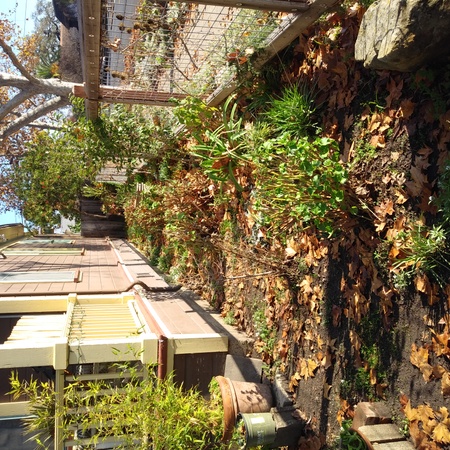
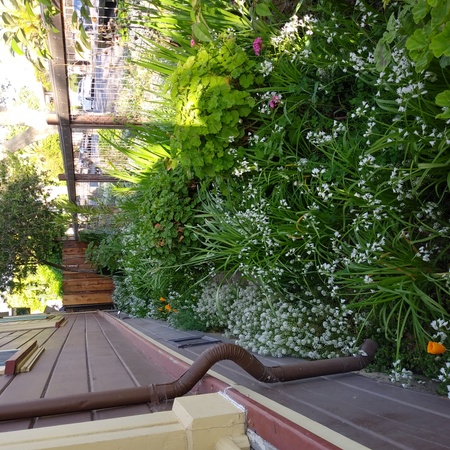
SoSide street view- Dec 2023- Apr 2024
Poppy's are beginning to pop out!
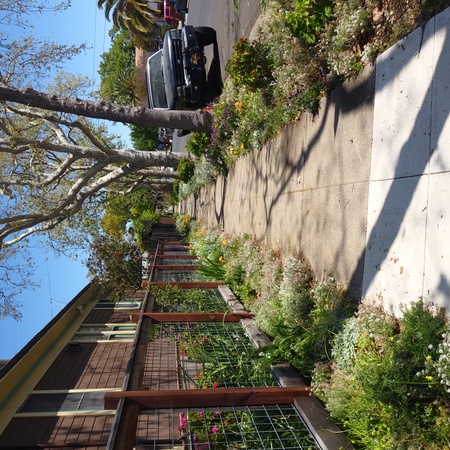
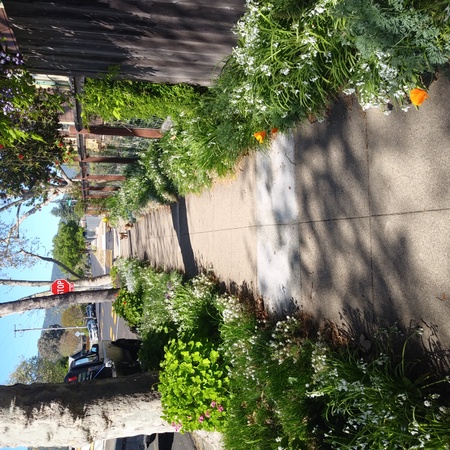
Creating a pollinator friendly garden has positively impacted our local nature and the community in several ways:
Pollination: Bees are crucial pollinators for many plants, including fruits, vegetables, and flowers. By providing a habitat for bees, we have been able help ensure the pollination of plants, leading to increased yields for agricultural crops and healthier ecosystems. Since planting the pollinator garden, we have seen a noted increase in the bees and butterflies in the area. Monarchs are an endangered species, that we have begun to see feed on the milkweed we planted. Many bees now frequent our garden, which will help the local agricultural community and local smaller gardens thrive!
Biodiversity: Supporting bee populations in our garden contributes to overall biodiversity by attracting other beneficial insects and wildlife. This creates a balanced and thriving ecosystem with a variety of species. The irrigation system we were able to install will help to save water, and the fountain with fresh water has begun to attract all kind of birds, including a Great Blue Heron! There have been different kind of bees noticed, and many types of butterflies that have begun to live in our garden. We have also noticed a hummingbird family has moved in and created a nest!
Environmental Health: Bees play a vital role in maintaining the health of ecosystems by pollinating native plants, which in turn provide habitat and food for other animals. We have researched native plants that attract bees and butterflies, in order to support the local flora without adding invasive species. Some of these beautiful native plants include, California Poppies, Milkweed, Blanket Flower, Lavender, Sage and many herbs and other gorgeous blooms. A bee-friendly garden helps preserve these ecosystems and supports the natural balance of the environment.
Community Engagement: Bee-friendly gardens can serve as educational tools for the community, raising awareness about the importance of bees and their role in the environment. We have posted educational signs about the garden and our need for bees in order to help inspire our community to plant their own bee friendly gardens! This can also foster a sense of community involvement through shared gardening efforts and conservation initiatives.
Aesthetic Appeal: Beyond their ecological benefits, bee-friendly gardens enhance the beauty of neighborhoods and public spaces with colorful flowers and buzzing activity. They provide peaceful and inviting environments for people to enjoy and connect with nature. Our garden has begun to bloom and the sweet scent of honeysuckle and wisteria creates not only a visual, but also an aromatic aesthetic beautiful to behold for the whole community!
Overall, creating and maintaining a bee-friendly garden not only benefits local bee populations but also has far-reaching positive effects on nature, community well-being, and environmental sustainability. We at the Bees Knees Garden Team would like to say a huge THANK YOU to Amazon and Change X for funding our garden and helping to create an even more beautiful community in lovely Gilroy!
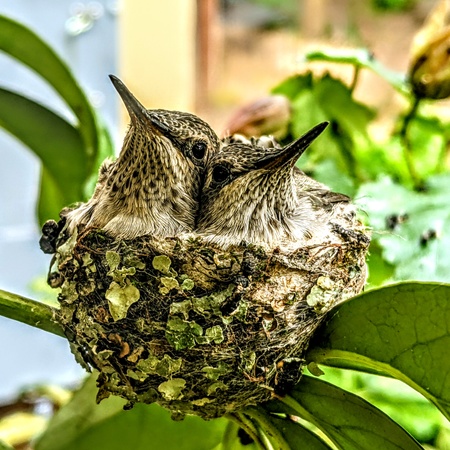
Mural Artist : Alison Thomas Alisonclairethomasartwork.com YouTube: Cali Ali Art
